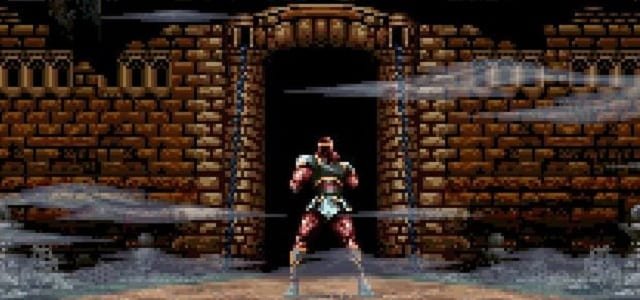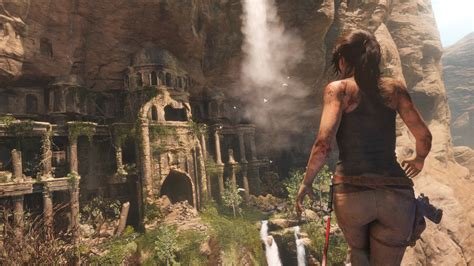Electron in a hedgehog
I don’t know to what extent they actually believed this, or whether this is something I’ve made up over the years, but upon receipt of our first family computer (a Commodore VIC-20, gifted by a cool Uncle) I think my parents thought that big things would happen. If you’ve seen From Bedrooms to Billions, have read Britsoft, randomly happen to know a little bit about personal computing in Britain in the eighties, or are yourself a child of that era, you’ll know what I mean.
Anyway, it didn’t quite go to plan and, instead of launching the next computing empire through my creative digital endeavours, I happily became a consumer of games that others had made. It is a pastime I still thoroughly enjoy. The images below (left-to-right), showcase one of my earliest game loves (Shamus), the game I played most recently (Super Castlevania IV), and the game I’m currently playing my way through (Rise of the Tomb Raider). Look at how far we’ve come!
I guess my parents were playing the long game though. I started using computers for ‘work’ when I started my graduate studies, and I’ve been using them for work ever since.
Well played aged ones. Well played.
Last year, I was able to present some work that combined my love of games with one of my areas of scientific interest. And it all came about because of a New Yorker profile I’d read in 2015.
The profile describes the game studio Hello Games who was, at that time, up to their armpits in getting No Man’s Sky ready for it’s initial release (that happened in 2016). No Man’s Sky is a space exploration game, and the space you can explore is vast - containing ‘quintillions of unique planets, flora, fauna, alien beings, and spacecraft’. One of the reasons for this vastness, and expanse of variety, is that it is a procedurally generated game - i.e. one for which data in the game is not built by a developer but, is instead, generated algorithmically.
Procedural generation within No Man’s Sky relies on the Superformula.
[1] Gielis, Johan (2003), A generic geometric transformation that unifies a wide range of natural and abstract shapes, American Journal of Botany, 90 (3): 333–338, https://doi.org/10.3732/ajb.90.3.333
The Superformula is able to generate both natural looking and abstract shapes, and is responsible for the stunning visuals that dominate the No Man’s Sky universe.
Some of the simplest shapes that can emerge - squares, circles etc. are familiar to everyone. And, because of their symmetries, they are frequently used in exercises in mathematical physics. We solve problems in planes of differing geometries, precisely because we can use mathematical tricks to make the solutions tractable - they’re wonderful exercises for the budding theoretician to get their teeth stuck into.
Around the time of the profile appearing, a scientific paper came out that described the exploration and consequences of ‘low dimensional chemistry’. All of this tumbled together, and I got to wondering whether anyone had looked at the problem of an electron confined to a region defined by the superformula. Solutions to the problem of an electron in a square, circle, ellipse, etc. are frequently used exercises to get students comfortable with the mathematics of quantum mechanics, while introducing concepts such as quantization. So, while this wouldn’t have any kind of physical implications, it might at least be useful from a pedagogical perspective.
So, that’s what I did, finally deciding to submit it to the Division of Chemical Education (CHED) for consideration as an oral presentation for the American Chemical Society meeting that took place virtually in the autumn of 2020. The abstract was accepted, and you can find the presentation below.
Is this groundbreaking science? Absolutely not.
Will it ultimately be useful to educators and students alike? Who knows, hopefully.
Am I pleased that I was able to take a random New Yorker article and turn it into some ‘science’? Without a doubt.



